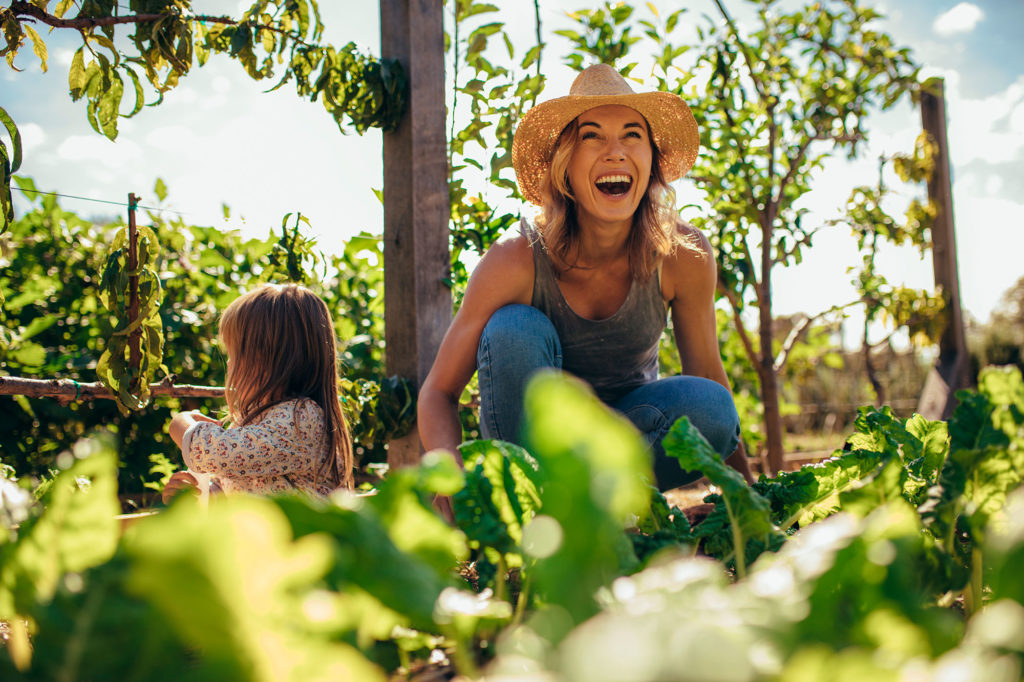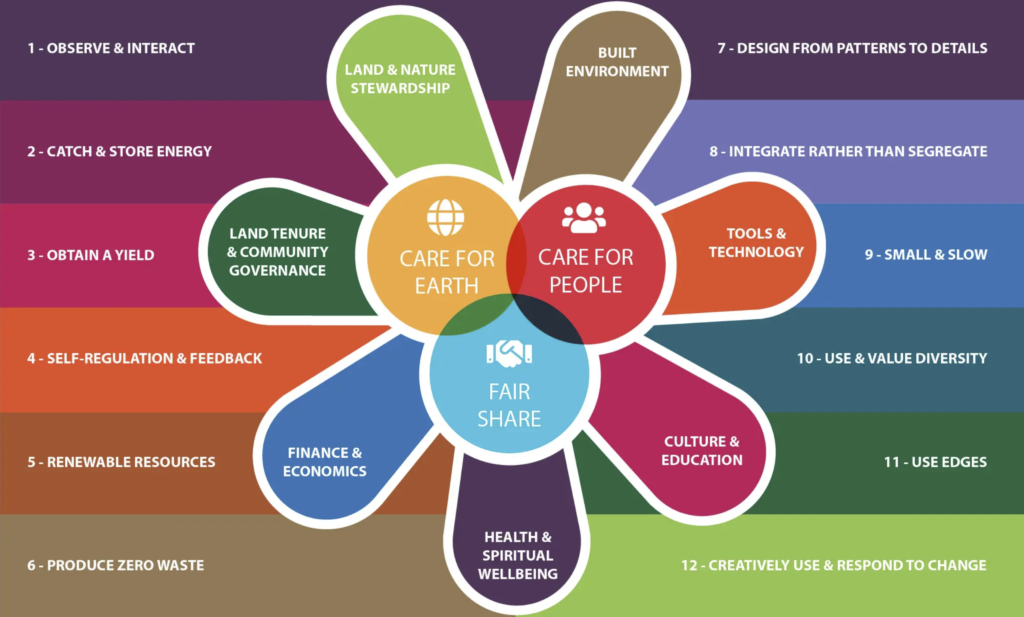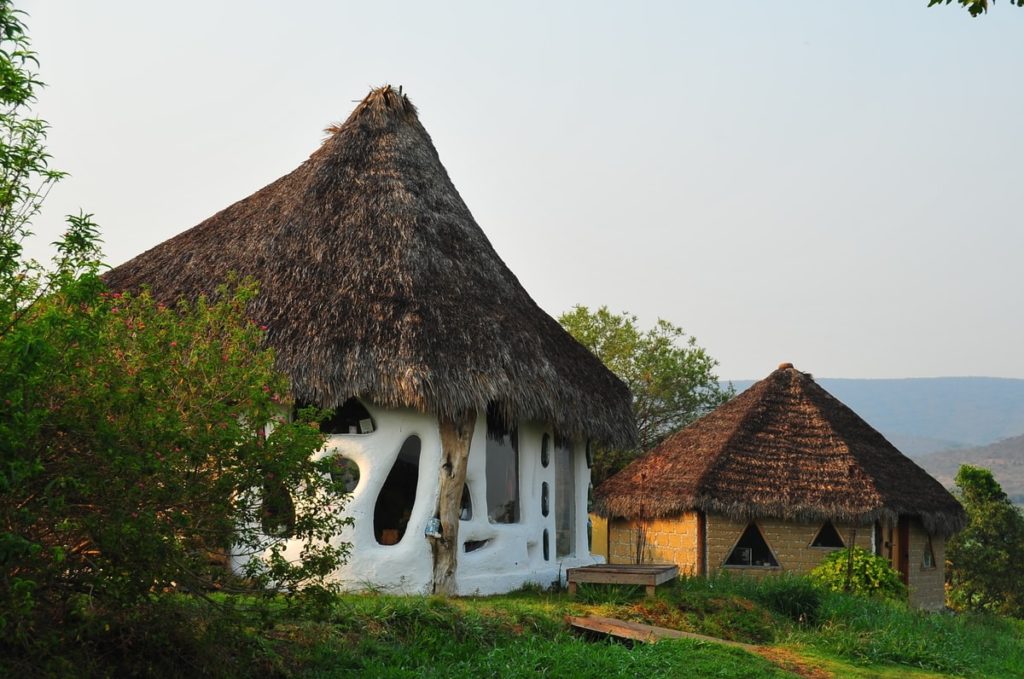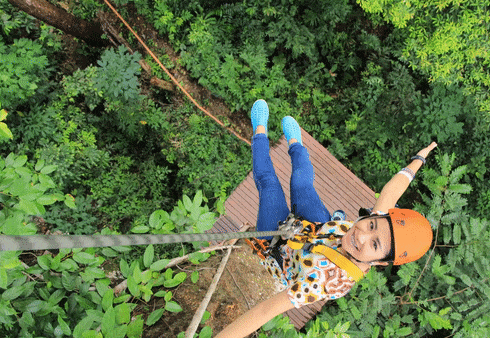Ecovillages + Permaculture: Nature in symbiosis

Escaping from the routine, the noise, and the rush of the city is a fantasy that has crossed our minds. The image of living in a cabin in the middle of a mountain, producing our food, far from the big cities sounds wonderful when we are stuck in public transport, probably thinking about how unhappy we are in our jobs. But even if you are happy living in the city, it’s nice to think of a calmer life, isn’t it?
Can you imagine a community where food is abundant, energy is clean and free, and children can play in the streets without fear of having a mishap? Well, this is not a utopian dream and the solution may be near where you live, in a small and little ecovillage.
According to GEN (Global Ecovillage Network), the ecovillage is a human settlement that bases its principles on permaculture. It is sustainable and permanent.
An ecovillage is a human scale, a full-featured settlement that integrates human activities harmlessly into the natural environment, supports healthy development, and can be continued into the indefinite future.
Robert Gilman
These ecovillages are located in rural areas, where new villagers migrate from the cities to be in contact with nature. They meet in organized communities to have a calmer life and participate in permaculture —which is also a recent concept— where crops of high nutritional and economic value are developed. The most important thing is that the wooden areas are preserved and reforested with species of higher value and cultural tradition.
Another great advantage of this type of organization is that communities related to this system can work in harmony, with sustainable practices for the environment and collective security. For this same reason, hilly and wooded lands that are not suitable for large-scale agriculture can be used.
What is permaculture?
Permaculture is a science created by the Australian biologist Bill Mollison, which is based on care and respect for human life, animals, and earth. These three principles have evolved in such a way that today there are more than a thousand ecovillages living in peace, abundance, and in mutual love with the planet.
Consciously designed landscapes which mimic the patterns and relationships found in nature, while yielding an abundance of food, fiber, and energy for the provision of local needs. People, their buildings, and the ways they organize themselves are central to permaculture. Thus, the permaculture vision of permanent (sustainable) agriculture has evolved into one of permanent (sustainable) culture.
David Holmgren

Having said this, what this type of organization looks forward to is to transcend sustainability; to get a complete negative carbon footprint and a surplus in power generation or agriculture. In fact, permaculture is the modus operandi, the basic theory of life in the ecovillage, although each one has its particular idiosyncrasies.
The 4 dimensions
GEN developed the guidelines to recognize the ecovillages. These are based on design cards that represent the four dimensions to create complete systems:
- Social sustainability: Ecovillages work to generate trust, collaboration, and openness among people. They give a sense of belonging to individuals and accept diversity. Likewise, they guarantee access to comprehensive education and health care.
- Cultural sustainability: Celebrations, art, dance, and activities are of great importance for community prosperity. They connect people with their environment, as well as adopt low-impact lifestyles.
- Ecological sustainability: Communities have access to food, shelter, water, and energy that respect the cycles of nature and regenerate ecosystems. They use renewable energy, grow food, take care of the soil, embrace green building technologies, and treat waste as valuable waste.
- Economic sustainability: Ecovillages build economic practices that contribute to resource sharing and mutual support to strengthen the local economy. Local currencies, exchange, social entrepreneurship, the circular economy, and other forms of collaboration are essential.
Although ecology is one of the strongest approaches, the most important aspect is that there is no permanent change without strong social stability. The community is the most important thing to live in sustainable societies together with nature.
Ecovillages around the world

According to the GEN, there are 10,000 ecological communities in 114 countries, as well as 35 state networks, 135 GEN ambassadors, 130 trainers, 32 associations, and 23 governments interested in implementing this type of program internally. These are some of the most significant ecovillages in the world:
- La Montaña (Chile)
Born in 1992, La Montaña offers one to twelve-month volunteer jobs to integrate into the life of the community. It advocates for a sustainable society and lifestyle with the environment.
- Yarrow Ecovillage (Canada)
It was founded in 2001 and is located on a 10-hectare old dairy farm. It has areas dedicated to housing and cultivation. They have an expansion project to create a town with a capacity for 35 homes.
- The Farm (USA)
Created in 1971 and it has 220 members. It is one of the largest and oldest ecovillages in the country. It has been awarded several times for its activism in defense of indigenous rights.
- Las Gaviotas (Colombia)
Founded in 1971 by a group of engineers and scientists who aspired to lead a sustainable life. From 1980 to 1990, Las Gaviotas operated a hospital to serve the indigenous population and developed various inventions in favor of the community.
- Konohana Family (Japan)
This rural ecovillage dates from 1993 and is located at the foot of Mount Fuji. Its 100 members consider themselves a family, although they are not linked by blood ties. They’re engaged in agriculture.
- Crystal Waters (Australia)
Born in 1986, it houses more than 200 people. In 1996 they received the World Habitat Award and they live from commerce, tourism, the lighting industry, and educational activities.
- Ecovillage Madagascar (Madagascar)
It started in 2013 and has 11 members. They are dedicated to improving the quality of life of the rural population, instilling sustainable economical and environmental practices, and recovering natural spaces.
Are you prepared to live a totally alternative lifestyle, different from the city? To change the asphalt for the countryside? To develop a way of life integrated into nature, where sustenance comes from the earth, everyone knows each other, and interact with forms of micro-government? Are you ready to live in symbiosis with nature?
Perhaps we are at the right time towards an imminent consciousness shift to evaluate the way we live as a society and the way we understand our planet, our home in the universe.
If you’ve had the opportunity to be in a community or practiced permaculture, we invite you to share your experience with us in the comments!
AND LAST BUT NOT LEAST, WE RECOMMEND YOU TO WATCH:




